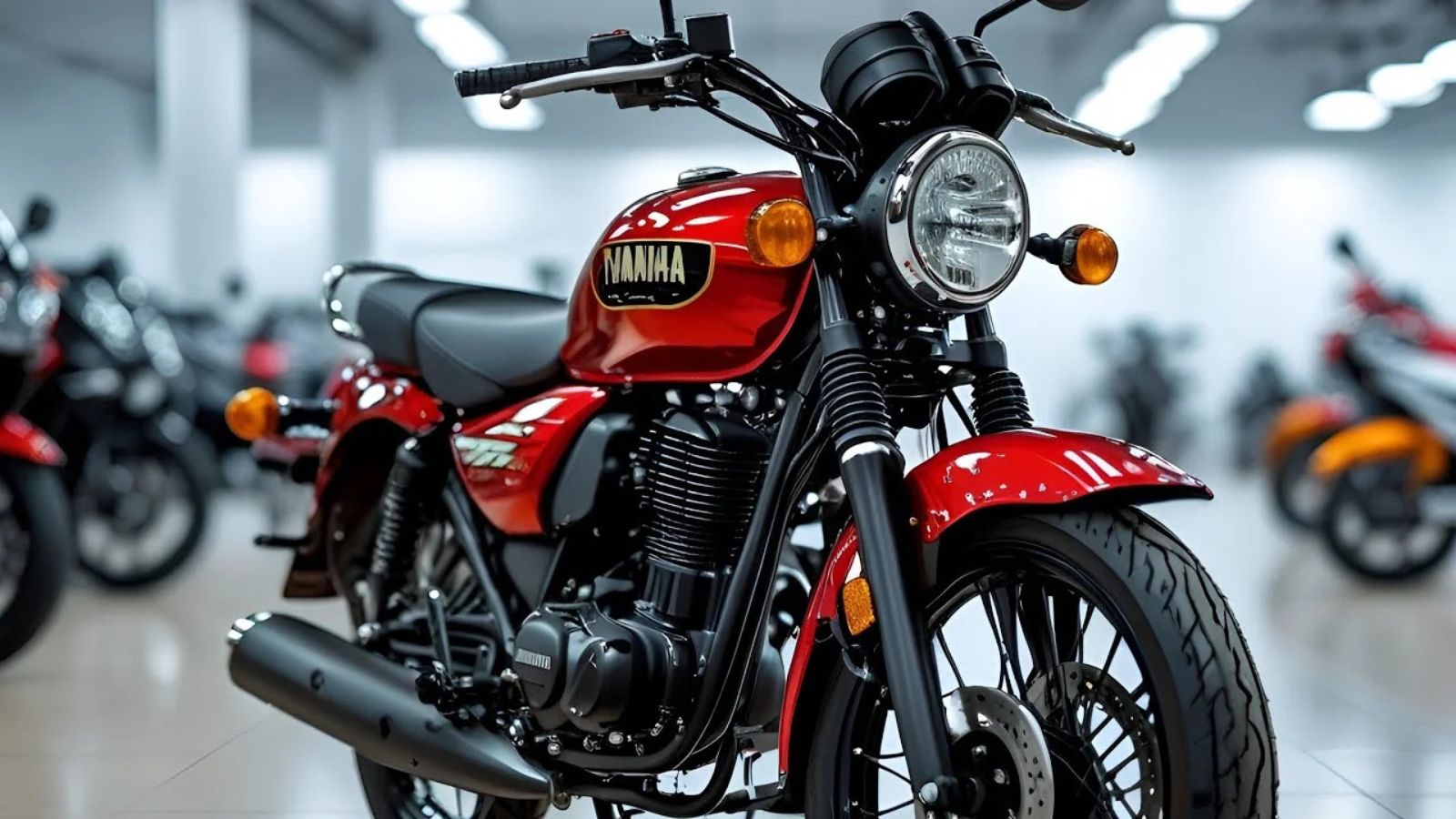When it comes to iconic motorcycles in India, few names spark nostalgia and admiration the way the Yamaha RX100 does. This two-wheeler wasn’t just a machine; it was a lifestyle, a status symbol, and for many, their first taste of thrilling freedom on two wheels. Introduced in the mid-1980s, the Yamaha RX100 quickly earned a legendary status for its blistering acceleration, razor-sharp exhaust note, and unmatched street performance. Even today, decades after its discontinuation, it commands respect and admiration from enthusiasts and collectors alike.
Yamaha RX100: A Snapshot of Specifications
To understand the enduring love for the Yamaha RX100, we need to revisit its specifications—numbers that, while modest by today’s standards, were revolutionary at the time.
| Feature | Details |
|---|---|
| Engine | 98cc, air-cooled, 2-stroke single-cylinder |
| Power Output | Approximately 11 HP |
| Transmission | 4-speed manual gearbox |
| Weight | About 100 kg |
| Top Speed | Close to 100 km/h |
| Brakes | Drum brakes (front & rear) |
| Mileage | 25–30 km/l, depending on maintenance and tuning |
| Suspension | Telescopic forks (front), twin shock absorbers (rear) |
| Production Years | 1985 to 1996 |
| Legacy | Cult icon with unmatched raw character |
Yamaha RX100: Why This Bike Defined a Generation
When the Yamaha RX100 hit Indian roads, the two-wheeler market was still dominated by sluggish and bulky commuter bikes. Yamaha’s strategy was brilliant—they introduced a bike that combined sleek looks, a robust frame, and a fiery engine. It quickly became clear that the RX100 wasn’t your average daily rider—it was a power-packed performer designed for thrill-seekers.
Its 98cc two-stroke engine delivered explosive low-end torque and instant throttle response. What riders loved most was the feeling of raw power that surged through the handlebars the moment you twisted the throttle. The Yamaha RX100 didn’t just move; it flew. It was not uncommon to see it leave behind bigger, more expensive bikes during a traffic signal showdown.
Another reason behind its cult-like following was its aesthetics. The slim tank, chrome-finished mudguards, minimalistic headlamp casing, and bold color options gave it a timeless look. Even today, many restored versions maintain their original design, simply because it never needed a makeover to stay relevant.
Yamaha RX100: Key Features That Set It Apart
The standout attribute of the Yamaha RX100 was its simplicity. It had no fancy electronics, no digital meters, no riding modes. And that’s exactly what made it special. It focused on mechanical brilliance rather than technological gimmicks.
1. Explosive Performance
Despite having a small 98cc engine, the Yamaha RX100 could outperform many higher-displacement four-stroke bikes of the time. Thanks to its lightweight construction and two-stroke configuration, it had a power-to-weight ratio that made it perfect for quick accelerations and rapid overtakes. Riders who experienced it firsthand often compare it to a pocket rocket.
2. Feather-Light Frame
Weighing only around 100 kg, the RX100 offered superb maneuverability. Whether you were navigating city traffic or racing on open roads, its nimbleness made it feel like an extension of your body. It was extremely forgiving for new riders and equally satisfying for seasoned ones.
3. The Iconic Exhaust Note
Perhaps no feature of the Yamaha RX100 is more fondly remembered than its signature exhaust sound—a sharp, crackling note that was music to a motorcyclist’s ears. That unmistakable sound could be recognized from blocks away, and for many, it announced the arrival of something special.
4. Customization and Tuning Potential
The RX100 also became a darling of the aftermarket scene. From expansion chamber exhausts to high-performance carburetors and racing sprockets, there was almost no limit to how one could customize this machine. Tuners and racers loved how easily the engine responded to upgrades.
Yamaha RX100: More Than Just a Motorcycle—A Movement
Over the years, the Yamaha RX100 became much more than just a mode of transport. It became a symbol of youth rebellion, speed, and individuality. While commuter bikes focused on mileage and comfort, the RX100 stood for raw power and attitude.
It also carved a niche in drag racing circuits and local street races. With slight modifications, it could easily beat 125cc or even 150cc bikes. Its high-revving engine and aggressive powerband made it a fierce competitor on the streets and tracks.
Why Was the Yamaha RX100 Discontinued?
The question that often pops up among younger enthusiasts is: why was such an incredible machine taken off the shelves?
The answer lies in environmental regulations. By the mid-1990s, India began implementing stricter emission norms. Two-stroke engines, despite their high performance, emitted more pollutants compared to four-stroke motors. Yamaha, like many other manufacturers, had to comply. Since the RX100’s engine couldn’t meet these evolving standards without compromising its essence, the company chose to discontinue it in 1996.
The Yamaha RX100 thus faded from showrooms, but never from the roads—or hearts.
Is the Yamaha RX100 Still a Good Buy in 2025?
While it’s been nearly three decades since its last official production run, the Yamaha RX100 remains a hot property in the pre-owned market. Enthusiasts and collectors actively scout for well-maintained models. In fact, a fully restored RX100 today can fetch between ₹50,000 and ₹1.5 lakh or even more, depending on originality and modifications.
Those who still ride the RX100 swear by its reliability. If cared for properly, the bike can still deliver solid performance. However, sourcing original spare parts can be challenging and expensive. Many turn to aftermarket suppliers or scavenge parts from other models to keep the legacy alive.
Daily Commuting on a Yamaha RX100 Today—A Reality Check
Using a Yamaha RX100 as a daily ride in 2025 comes with pros and cons. On the plus side, it’s still one of the most thrilling bikes to ride in city traffic. Its instant pickup and nimble handling allow you to weave through vehicles effortlessly.
However, it’s not without challenges:
- Fuel Efficiency: Compared to modern four-stroke engines, the RX100 is thirsty. Expect fuel consumption in the 25–30 km/l range.
- Maintenance: Requires regular upkeep and tuning.
- Availability of Parts: Original spares are rare and can be costly.
- Emissions and Noise: Not environmentally friendly by today’s standards.
Despite these drawbacks, many enthusiasts gladly accept the trade-offs. Because for them, riding a Yamaha RX100 isn’t about convenience—it’s about connection.
What Makes the RX100 Faster Than Its Rivals?
During its prime, the Yamaha RX100 was far ahead of its competitors in performance. The secret lay in its two-stroke engine, which delivered power on every second stroke (unlike four-stroke engines that deliver power every fourth stroke). This allowed it to produce rapid bursts of torque.
Combine that with a lightweight frame, a smooth-shifting 4-speed gearbox, and excellent gear ratios, and you had a recipe for speed. Riders often recall how the RX100 could effortlessly hit 100 km/h while maintaining superb control.
Legacy of the Yamaha RX100: Still Roaring
Even though the last RX100 rolled off the assembly line decades ago, its spirit lives on. Restoration projects, RX100 fan clubs, drag races, and dedicated social media pages continue to keep its memory alive. For many, owning an RX100 is about preserving a piece of motorcycling history.
And now, with rumors that Yamaha might bring back the RX100 brand in a new avatar—perhaps with a four-stroke engine that meets current norms—hopes are high that a modern legend might be born again.
Frequently Asked Questions (FAQs) About the Yamaha RX100
1. Why is the Yamaha RX100 considered a legend?
The Yamaha RX100 earned legendary status due to its unmatched performance, iconic design, aggressive exhaust note, and its emotional connect with a generation of riders.
2. Is Yamaha planning to re-launch the RX100?
There are unconfirmed reports that Yamaha may consider reviving the RX100 nameplate in the future, possibly with a modern four-stroke engine. However, no official confirmation has been made as of 2025.
3. How can I identify an original Yamaha RX100?
Look for details like engine number, chassis markings, and original badging. Be cautious of modified or replica models being passed off as originals.
4. Can the RX100 still be registered with RTOs in India?
Yes, but it depends on your state’s regulations. Some regions allow re-registration with a valid fitness certificate, while others may impose restrictions due to emission concerns.
Conclusion: A Legacy Cast in Smoke and Steel
The Yamaha RX100 wasn’t just a motorcycle—it was a revolution on two wheels. It represented speed, freedom, and rebellion at a time when Indian roads were just beginning to open up to performance biking. It gave riders something more than just a commute; it gave them a thrill.
Even today, hearing that distinctive two-stroke roar or catching sight of its slim silhouette evokes powerful memories for countless enthusiasts. The fact that people still hunt for, restore, and ride the Yamaha RX100 decades after its production ended is a testament to its timeless appeal.
Whether you’re a seasoned biker or someone just learning about motorcycles, the RX100’s story is one worth knowing. And if you ever get a chance to ride one—don’t miss it. You won’t just be riding a bike; you’ll be reliving a piece of Indian motorcycling history.
Some Important Link
| Telegram Group | Click Here |
| WhatsApp Group | Click Here |
| Home Page | Click Here |













